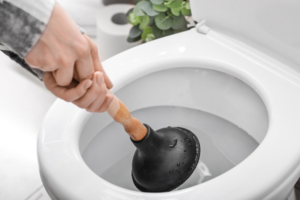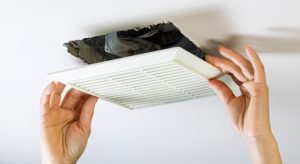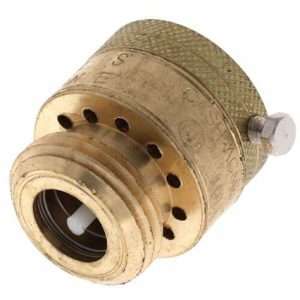How to Identify Orangeburg Pipe:
Signs, Inspection, and Replacement
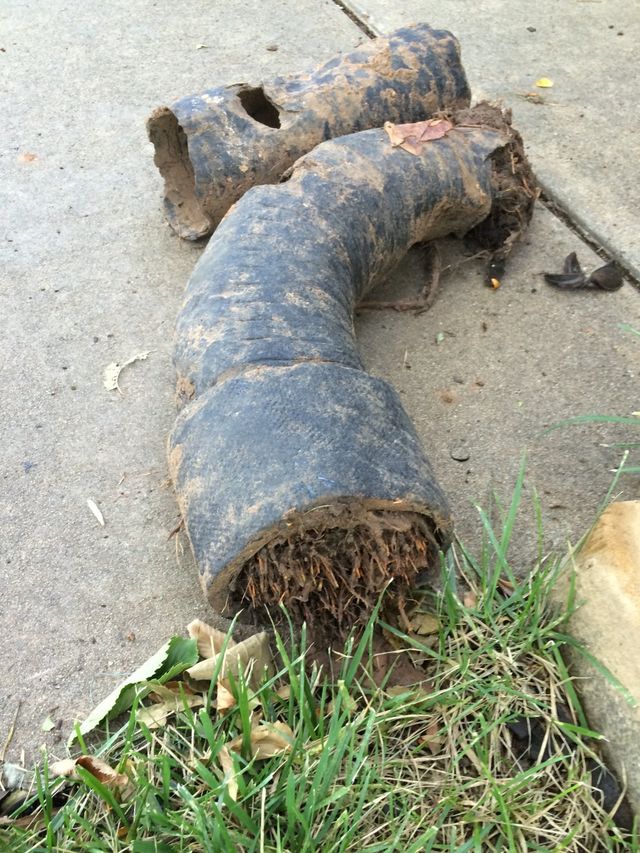
Are you facing plumbing issues? Perhaps, you’re dealing with an outdated piping system. One such system, prevalent in many older homes, is the Orangeburg pipe. Let’s unravel the mystery behind this peculiar name.
Orangeburg pipes, also known as fiber conduit pipes, were widely used from the 1860s through the 1970s due to their low cost and ease of installation. However, these pipes are infamous for their short lifespan and frequent issues.
In this piece, you’ll learn how to identify Orangeburg pipes in your plumbing system. This valuable knowledge could save you from a potentially messy and costly plumbing disaster. So, let’s dive in to help you understand more about these pipes and how you can spot them.
What is Orangeburg Pipe?
Orangeburg pipe is a type of sewer pipe that was commonly used in residential plumbing systems from the 1940s to the 1970s. This section will provide a clear understanding of what Orangeburg pipe is, its history, and its characteristics and composition.
Definition and History
Orangeburg pipe, also known as bituminous fiber pipe, is a pipe made from layers of wood pulp and hot pitch. It was named after the town of Orangeburg, New York, where it was first manufactured. The pipe gained popularity during World War II when there was a shortage of metal and other materials.
Characteristics and Composition
Orangeburg pipe is made by impregnating layers of wood pulp with hot pitch or coal tar. This process creates a durable and lightweight pipe that can be easily installed. The pipe is typically bell-shaped at one end, allowing for easy connection with other pipes.
One of the distinguishing characteristics of Orangeburg pipe is its flexibility. It can be bent and shaped to fit the contours of the ground, making it ideal for sewer lines that need to navigate around obstacles. However, this flexibility can also be a drawback as it is prone to collapse under pressure.
The composition of the Orangeburg pipe makes it susceptible to various issues over time. It is prone to deterioration due to exposure to moisture, soil acidity, and tree root intrusion. The wood pulp layers can break down, leading to pipe deformation and eventual failure. The pitch or coal tar coating can deteriorate, compromising the pipe’s integrity.
In terms of lifespan, Orangeburg pipe generally has a shorter lifespan compared to other sewer pipe materials. While its expected lifespan was initially touted as 50 years, many Orangeburg pipes have deteriorated after only 30 years or less.
In conclusion, an Orangeburg pipe is made from layers of wood pulp and hot pitch. It gained popularity during the mid-1900s but has since fallen out of favor due to its susceptibility to deterioration and collapse.
Signs of Orangeburg Pipe
Orangeburg pipe, also known as bituminous fiber pipe, was commonly used as a sewer line material in residential properties during the mid-20th century. While durable at the time of installation, Orangeburg pipe has proven to have a limited lifespan, often deteriorating over time. In this section, we will explore some key signs that can help you identify if your property has Orangeburg pipe.
Age of the Property
One of the first indicators that your property may have Orangeburg pipe is its age. Orangeburg pipe was widely used from the 1940s to the 1970s, so if your property was constructed during this period, there is a higher likelihood that Orangeburg pipe was used as a sewer line material. Knowing the approximate age of your property can be a valuable clue in identifying the presence of Orangeburg pipe.
Sewer Blockages and Backups
Another sign of Orangeburg pipe is frequent sewer blockages and backups. As the pipe deteriorates, it can become more susceptible to collapse or deformation, leading to obstructions in the sewer line. If you notice recurring clogs or sewage backups in your property, it could be an indication of Orangeburg pipe-related issues. It is important to address these problems promptly to prevent further damage to your plumbing system.
Sinkholes and Depressions
Sinkholes and depressions in your yard or near your property can also be signs of Orangeburg pipe problems. As the pipe deteriorates, it can cause soil erosion and subsidence, resulting in sinkholes or depressions in the ground. If you notice any unusual changes in your landscaping, such as sunken areas or sudden depressions, it is advisable to have your sewer lines inspected for possible Orangeburg pipe issues.
Changes in Water Pressure
Changes in water pressure can be another clue that your property may have Orangeburg pipe. As the pipe deteriorates, it can develop cracks or collapse, leading to reduced water flow and pressure. If you experience inconsistent water pressure or a sudden drop in water flow, it could be a sign of Orangeburg pipe-related problems. Monitoring your water pressure and addressing any significant changes promptly can help prevent further complications.
By being aware of these signs, you can better identify if your property has Orangeburg pipe. If you suspect the presence of Orangeburg pipe or encounter any of the mentioned issues, it is recommended to consult a professional plumber or sewer specialist for a thorough inspection and appropriate repairs or replacements.
How to Identify Orangeburg Pipe
When identifying the Orangeburg pipe, start by conducting a thorough inspection. This inspection process allows you to assess the condition of the pipe and determine the necessary steps for repair or replacement. In this section, we will explore two different approaches to inspecting Orangeburg pipe: professional inspection and DIY inspection.
Professional Inspection
Hiring a professional to inspect your Orangeburg pipe can provide you with valuable insights and expertise. These professionals are well-equipped with the knowledge, tools, and experience to identify the presence of Orangeburg pipe and evaluate its condition accurately. Here are some key benefits of opting for a professional inspection:
- Expert Knowledge: Professionals specialize in identifying various types of pipe materials, including Orangeburg. Their expertise enables them to identify the distinctive characteristics of Orangeburg pipe, such as its tar-like composition and its tendency to deteriorate over time.
- Advanced Tools: Professionals use specialized equipment, such as sewer cameras and pipe locators, to inspect and assess the condition of Orangeburg pipe. These tools allow them to visually inspect the pipe’s interior, identify potential blockages or collapses, and determine the extent of damage.
- Accurate Assessment: By relying on professionals, you can ensure an accurate assessment of the condition of your Orangeburg pipe. They can provide you with detailed insights, including the remaining lifespan of the pipe, potential risks or hazards, and recommended repair or replacement options.
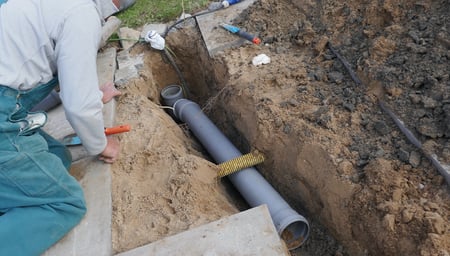
DIY Inspection
If you prefer a hands-on approach or want to gain a preliminary understanding of your Orangeburg pipe’s condition, you can perform a DIY inspection. While this method may not be as comprehensive as a professional inspection, it can still provide valuable information. Here are some steps to follow for a DIY inspection:
- Visual Examination: Start by visually inspecting the exterior of the pipe. Orangeburg pipe is typically made of layer upon layer of tar-impregnated wood fibers, giving it a distinctive appearance. Look for signs of wear, sagging, or deformities in the pipe’s shape, as these can indicate the presence of Orangeburg.
- Probing the Pipe: Using a screwdriver or another sharp object, gently probe the surface of the pipe. Orangeburg pipe is known for its soft and flexible nature, so if you can easily penetrate the surface, it may indicate the presence of Orangeburg. However, exercise caution to avoid damaging the pipe further.
- Checking for Blockages: Orangeburg pipe is susceptible to collapsing and developing blockages over time. If you experience frequent backups, slow drainage, or foul odors in your plumbing system, it could be a sign of a compromised Orangeburg pipe. Consider using a drain snake or auger to check for obstructions.
- Assessing Surrounding Vegetation: Orangeburg pipe is prone to water seepage, which can lead to lush vegetation growth above the buried pipe. If you notice an area of your yard with consistently vibrant or greener vegetation, it could be an indication of a leaking Orangeburg pipe beneath.
Remember, a DIY inspection should only serve as an initial evaluation. If you suspect the presence of Orangeburg pipe or encounter any significant issues during your inspection, it’s highly recommended to consult a professional for a more detailed assessment.
Replacing Orangeburg Pipe
Orangeburg pipe, also known as bituminous fiber pipe, was commonly used in residential plumbing systems during the mid-20th century. However, due to its inherent weaknesses and susceptibility to damage, many homeowners face the need to replace this outdated piping material. In this section, we will explore two options for replacing Orangeburg pipe: hiring a professional or opting for a DIY replacement.
Hiring a Professional
When it comes to replacing Orangeburg pipe, hiring a professional plumber can provide numerous benefits. These experienced individuals possess the necessary skills and knowledge to efficiently and effectively tackle the task at hand. Here are a few advantages of hiring a professional for Orangeburg pipe replacement:
- Expertise: Professional plumbers specialize in pipe replacement projects and have extensive experience dealing with various types of plumbing systems. They can accurately assess the condition of your Orangeburg pipe, determine the best course of action, and execute the replacement with precision.
- Time-saving: Replacing Orangeburg pipe can be a complex and time-consuming process. By entrusting the job to a professional, you can save yourself the hassle of dealing with the intricacies involved. Plumbers have the necessary tools, equipment, and manpower to complete the replacement in a timely manner, minimizing disruption to your daily routine.
- Quality assurance: Professional plumbers adhere to industry standards and regulations, ensuring that the replacement is done correctly and up to code. By entrusting the task to a professional, you can have peace of mind knowing that the new piping system will be durable, reliable, and free from potential issues.
DIY Replacement
While hiring a professional may be the preferred option for many homeowners, some individuals may prefer to take on the challenge of replacing Orangeburg pipe themselves. If you have a knack for DIY projects and possess the necessary skills, here are some key considerations for a DIY Orangeburg pipe replacement:
- Research and planning: Before diving into the project, conduct thorough research on Orangeburg pipe replacement techniques, tools, and materials. Familiarize yourself with the necessary steps, safety precautions, and local building codes to ensure a successful DIY endeavor.
- Obtain the right tools: To replace Orangeburg pipe, you will need a range of tools, including pipe cutters, wrenches, soldering equipment (if opting for a different type of pipe), and sealants. Make sure you have all the required tools on hand before starting the replacement.
- Assess your skills: Be honest with yourself about your plumbing skills. Orangeburg pipe replacement can be challenging, and any mistakes could result in costly repairs or further damage. If you’re not confident in your abilities, it may be wiser to hire a professional to avoid potential complications.
- Safety first: When working with plumbing systems, safety should always be a priority. Ensure you have the necessary protective gear, such as gloves and safety goggles, and follow proper safety procedures to minimize the risk of accidents or injuries.
Remember, DIY projects can be fulfilling, but they also come with risks. If you’re unsure about any aspect of Orangeburg pipe replacement, it’s always best to consult with a professional plumber.
Preventive Measures
Take preventive measures when it comes to identifying and dealing with Orangeburg pipe issues. Regular maintenance and proper waste disposal are two essential steps that can help you avoid costly repairs and potential hazards. Let’s dive deeper into each of these preventive measures:
Regular Maintenance
Regular maintenance is key to identifying and addressing Orangeburg pipe problems early on. By staying proactive, you can prevent further damage and ensure the longevity of your sewer system. Here are a few maintenance tasks to consider:
- Visual Inspections: Conduct visual inspections of your sewer lines regularly. Look for signs of deterioration, such as sagging or misaligned pipes, water backups, or foul odors. If you notice any of these warning signs, it’s important to take immediate action.
- Professional Inspections: Schedule professional inspections by a licensed plumber or sewer contractor. They have the expertise and tools to accurately assess the condition of your pipes and identify any potential Orangeburg pipe issues.
- Cleaning and Clearing: Regularly clean and clear your sewer lines to prevent blockages. Use appropriate drain cleaners or call professionals to perform hydro jetting to keep your pipes in optimal condition.
Proper Waste Disposal
Proper waste disposal is not only essential for maintaining a healthy sewer system but also for preventing Orangeburg pipe problems. Here’s what you should keep in mind:
- Avoid Flushing Non-Biodegradable Items: Never flush non-biodegradable items, such as wipes, feminine hygiene products, or paper towels, down the toilet. These items can clog your pipes and lead to potential Orangeburg pipe issues.
- Dispose of Grease Properly: Grease and cooking oil should never be poured down the drain. Instead, collect and dispose of them in a sealed container, and throw them in the trash. Grease can solidify and cause blockages in your sewer lines.
- Educate Household Members: Teach everyone in your household about the importance of proper waste disposal. Make sure they understand what can and cannot be flushed or poured down the drain. Simple habits can go a long way in preventing pipe problems.
Conclusion
Identifying Orangeburg pipe can help in maintaining the integrity of your plumbing system. By understanding the characteristics and signs of this type of pipe, you can take appropriate action to prevent potential problems and costly repairs. Remember that Orangeburg pipe is typically made of bituminous fiber and can show signs of deterioration such as flattening, cracking, and leaking. If you suspect that your plumbing system contains Orangeburg pipe, it is recommended to consult with a professional plumber who can accurately assess the situation and provide the necessary solutions. Taking proactive measures can save you from future plumbing headaches and ensure the smooth operation of your household.




